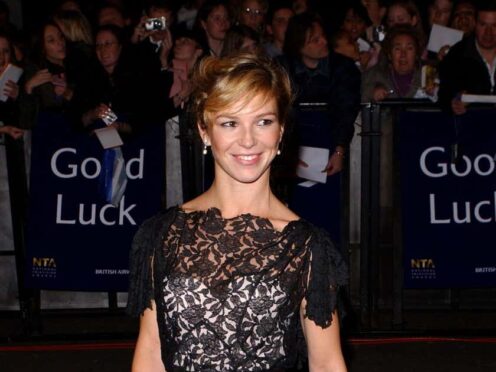Honeysuckle Weeks said she was “supposed” to play the late Queen in The Crown but was on the “verge of mania” at the time of casting.
The part in the hit Netflix show went to Claire Foy, who played the monarch for the first two seasons and in subsequent flashbacks, before Olivia Colman and Imelda Staunton took over for later series.
In an interview with The Telegraph, Foyle’s War actress Weeks, 44, opened up about how her mental health challenges in 2016 affected her career and being in “denial” about having bipolar disorder.

She said: “I nearly got Death Comes To Pemberley, the PD James series, when another actress fell out but it went to Anna Maxwell Martin.
“I was also supposed to play the Queen in The Crown – the role that Claire Foy eventually got – but by that point I was on the verge of mania and about to have the first of my psychotic episodes.
“I had a really important meeting about the role and I was florid, delusional and chaotic.”
The same year, the police briefly launched a search for Weeks amid concerns for her welfare but her sister, actress Perdita Weeks, later said she had been found “safe and sound”.
She had been taken into psychiatric care but absconded from the centre, the newspaper said.
“I climbed over the wall and sneaked on to the London train because I had no money”, Weeks said.
“I went to my sister’s house and she dobbed me in and called the police.”
At the time, Weeks had recently finished filming ITV detective drama Lewis and mystery thriller The Five.
She first rose to prominence for her portrayal of Samantha Stewart in the wartime drama Foyle’s War, starring in all eight series of the ITV show, which ran from 2002 to 2015.
She also appeared in hit TV dramas The Bill, The Inspector Lynley Mysteries and Death In Paradise.
Reflecting on her mental health journey, Weeks said: “I was also in denial about having bipolar disorder for years so I wouldn’t take drugs to control it.
“Now I accept that the only way forward is medication, medication, medication and I have left my Sturm und Drang period behind me.”
After a few run-ins with the law due to dangerous driving, Weeks said she felt “awful” and afterwards spent a year washing pots at Petworth House.
“It was a wake-up call, a lesson in humility; a way of punishing myself for my misdemeanours”, she added.
Weeks will star in a new production of the musical Calendar Girls, written by Gary Barlow and Tim Firth.
Reflecting on her attitude for the future, she said: “I’ve been self-indulgent and I’ve paid the price by washing pots.
“Now I want to do the sort of work that means I can take myself seriously as an actress.
“Obviously not as a person; that would be ridiculous – because life is ridiculous.”
